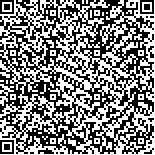| 摘要: |
| [摘要] 目的 比较间接免疫荧光法与颗粒凝集法诊断儿童肺炎支原体(MP)感染的临床价值。方法 选择2019-01~2019-12江苏大学附属医院儿科收治的MP感染患儿539例,均同时采用间接免疫荧光法与颗粒凝集法检测其血清标本,比较两种方法的检测结果。结果 间接免疫荧光法检测MP-IgM的阳性率为70.69%(381/539),颗粒凝集法的检测阳性率为73.10%(394/539),两种方法检测结果差异无统计学意义(P=0.409)。间接免疫荧光法检得0~2岁、3~5岁、≥6岁患儿的MP-IgM阳性率分别为70.00%、78.51%、60.25%,颗粒凝集法检得阳性率分别为70.67%、76.32%、70.81%。两种方法检测结果在0~2岁和3~5岁组比较差异无统计学意义(P>0.05),在≥6岁组比较差异有统计学意义(P<0.05)。对于病程≤3 d、4~7 d、8~14 d和≥15 d的患儿,间接免疫荧光法检得MP-IgM阳性率分别为61.90%、68.10%、82.35%、84.09%,颗粒凝集法检得阳性率分别为65.48%、70.86%、83.53%、84.09%,两种方法检测结果差异无统计学意义(P>0.05),检得阳性率随病程延长均呈增高趋势。结论 间接免疫荧光法和颗粒凝集法均可作为检测儿童MP感染的有效方式;病程8~14 d是较好的检测时间窗,可以较大程度避免漏诊,及早治疗。 |
| 关键词: 儿童 肺炎支原体 间接免疫荧光法 颗粒凝集法 |
| DOI:10.3969/j.issn.1674-3806.2020.12.08 |
| 分类号:R 725.6 |
| 基金项目:江苏省妇幼重点人才项目(编号:FRC201735) |
|
| Comparison of the clinical value between indirect immunofluorescence method and particle agglutination in diagnosis of Mycoplasma pneumoniae infection in children |
|
LU Jun-ying, LU Hong-yan, CHANG Ming, et al.
|
|
Department of Pediatrics, the Affiliated Hospital of Jiangsu University, Zhenjiang 212001, China
|
| Abstract: |
| [Abstract] Objective To compare the clinical value between indirect immunofluorescence method and particle agglutination in diagnosis of Mycoplasma pneumoniae(MP) infection in children. Methods Five hundred and thirty-nine children with MP infection who were admitted to Department of Pediatrics, the Affiliated Hospital of Jiangsu University from January 2019 to December 2019 were selected, and their serum samples were detected by indirect immunofluorescence method and particle agglutination at the same time, and the results were compared between the two methods. Results The positive rate of MP-IgM detected by indirect immunofluorescence method was 70.69%(381/539), and the positive rate of MP-IgM detected by particle agglutination was 73.10%(394/539), and there was no statistically significant difference in the detection result between the two methods(P=0.409). The positive rates of MP-IgM detected by indirect immunofluorescence method in children aged 0 to 2 years, 3 to 5 years, and ≥6 years were 70.00%, 78.51% and 60.25%, respectively. The positive rates of MP-IgM detected by particle agglutination were 70.67%, 76.32% and 70.81%, respectively. There were no significant differences in the detection results between the two methods in 0-2 years old group and 3-5 years old group(P>0.05). There were significant differences in the detection results between the two methods in the ≥6 years old group(P<0.05). For the children with disease courses of ≤3 days, 4-7 days, 8-14 days and ≥15 days, the positive rates of MP-IgM detected by indirect immunofluorescence method were 61.90%, 68.10%, 82.35% and 84.09%, respectively, and the positive rates of MP-IgM detected by particle agglutination were 65.48%, 70.86%, 83.53% and 84.09%, respectively; there were no significant differences in the detection results between the two methods(P>0.05), and the positive rates of the detections showed an increasing trend as the course of the disease prolonged. Conclusion Both indirect immunofluorescence method and particle agglutination can be used to detect MP infection in children. The course of disease from 8 to 14 days is a better detection time window, which can avoid missed diagnosis to a greater extent and start treatment as soon as possible. |
| Key words: Children Mycoplasma pneumoniae(MP) Indirect immunofluorescence method Particle agglutination |

